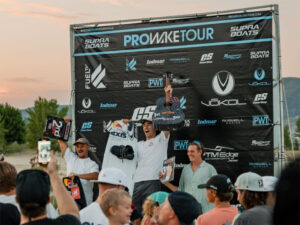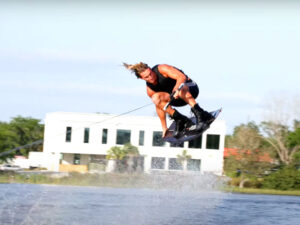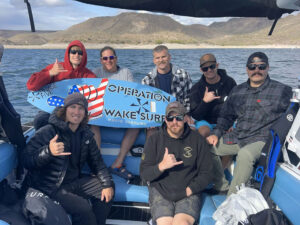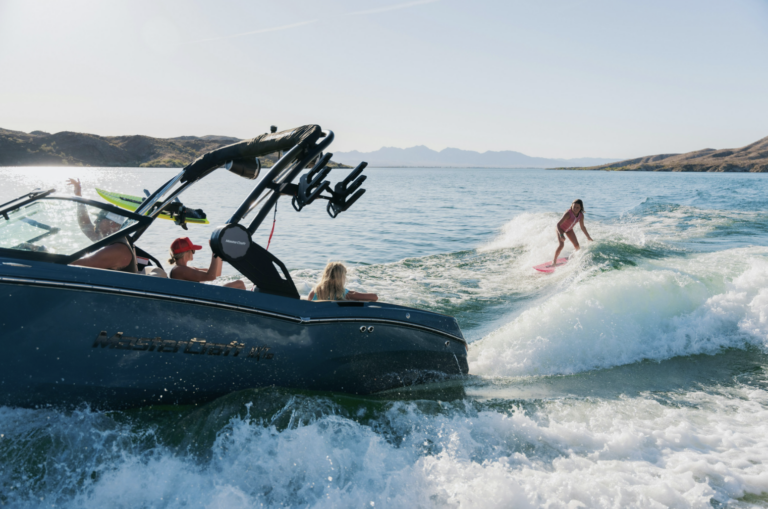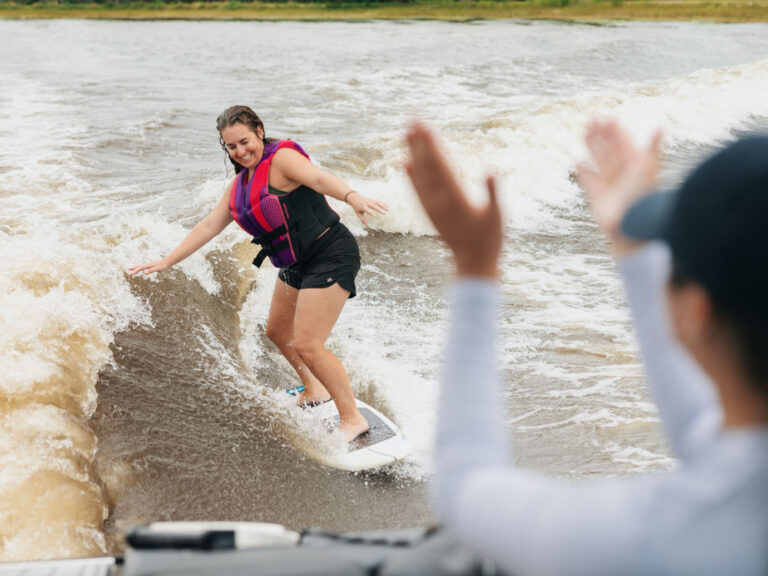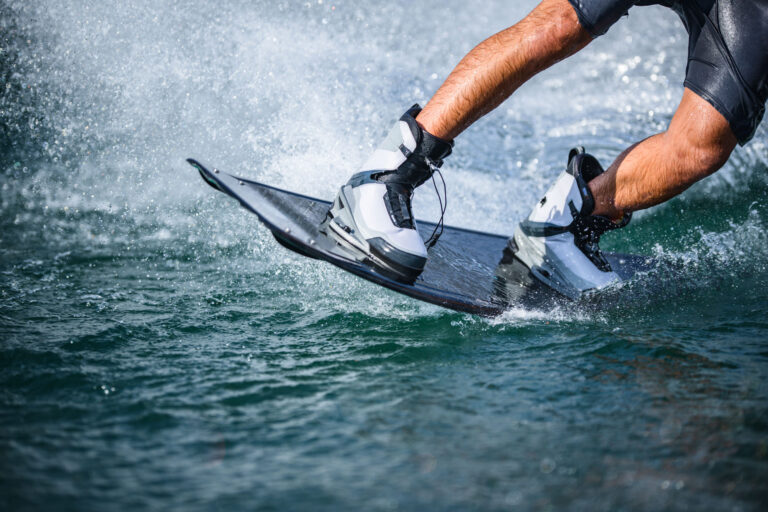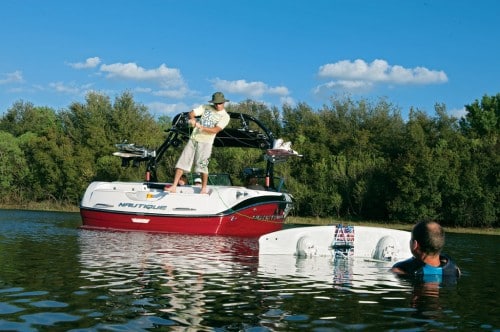
Shaun Murray went to his first wakeboarding camp with two self-taught tricks under his belt and big dreams of adding more spins and flips to his bag of tricks. He was surprised to spend the first two and a half days relearning how to jump the wake.
“After I took that home and used that as my foundation, that’s when things really started piling up for me and really started making sense,” says Murray, now a head coach at The Boarding School, an Orlando wake camp.
Wakeboarding camps and schools help you break bad habits, get out of ruts and master tricks you didn’t know you could do. At wakeboard camp, the intensive, hyper-focused professional instruction helps you advance exponentially faster than learning on your own or with your buddies. It’s also safer with less risk of injury.
“The amount you can learn in just an hour from a professional is almost equivalent to a summer of you trying to figure it out on your own,” says Scott Taylor, who runs the travelling clinic Ski and Wake. “When someone tells you the right way to do it, it’s a huge advantage.”
But how do you get the most out of your wake camp experience? We talked with some of wakeboarding’s best coaches to create a game plan that’ll ensure you learn more than ever this summer.
Find the Right School
Finding the right wakeboarding camp is a matter of asking the right questions. The price and proximity of a wake camp may narrow your choices, but there are plenty of other factors to consider.
“Think about everything from the staff that’s going to be coaching you to the conditions where you’re going to be riding,” Murray says. “The accommodations and atmosphere are big too because everywhere is going to be different.”
Do your research. Check out the wakeboard camp’s website and find out what previous students say on online forums. When possible, talk to the coaching staff and see if their approach meshes with the way you like to learn. Just remember, wakeboarding camp isn’t boot camp, says Doug Spady of Washington’s Bow Lake Watersports, so make sure your coaches are as focused on fun as they are on progression. Location is huge too. “Not just proximity to where you are, but the actual site that you’re going to be riding at,” says Eric Sund, head coach at Active Water Sports in Toledo, Washington.
Private lakes offer benefits public lakes sometimes can’t — a more controlled environment, for example, with protected water, consistent conditions and no angry fishermen to worry about. Finally, keep in mind that you want the best overall experience, and take into account the amenities, services and accommodations that best suit you.
Time It Right
There’s never a bad time to go to wakeboard camp. In fact, each part of the season has its own benefits. Go to camp at the very beginning of the season, and you’ll probably be a little rusty and out of shape. However, you’ll have all summer to take what you learned and apply it to your riding. Midseason is great too because you’ve had time on the water to shape up and you still have time to progress post-camp. If you’ve mastered the fundamentals, consider attending camp at the end of the season. That way, coaches can help you dial in the things you’ve been struggling with.
Properly Prepare
Riding is the best way to condition for camp, and the more time you spend on the water before camp, the better off you’ll be. The first ride is usually what makes you most sore, so even a week of riding before camp is beneficial. Sund recommends having the stamina to ride for at least one to two hours total each day.
Focus on the fundamentals in your pre-camp riding, because that’s where most coaches are going to start you off. After all, basic board control and body position are essential before you start getting air.
If you can’t get on the water, head to the gym and work on your core — abs, back and shoulders. Secondarily, turn to trampoline training and balance exercises. Cardio never hurts, but it shouldn’t be your focus. Whether on or off the water, don’t push yourself past your limits. The last thing you need is an injury before wakeboard camp even begins.
Pack Tight
Most wakeboarding camps are stocked with gear, so they’re great places to demo different equipment and find what’s best for your riding style, especially if new gear is an option for you. Still, it’s a good idea to bring your own setup. Generally, it’s beneficial to learn on the same board you ride at home. That way, you can continue to progress on your own equipment. Coaches also can watch you ride and make adjustments to your current setup or recommend gear that suits you better. In the end, the right setup will help you progress a lot faster.
Make a Game Plan
Set goals for yourself and set them high. But be realistic and flexible because your goals might change after working with your coaches.
“Your ultimate goal might not be something that you’ll get to at camp,” Sund says, “but you’ll definitely conquer some steps that will take you toward that goal.”
Also, prepare for correction. Chances are good you’ll have to fix some fundamentals and break bad habits. For example, many campers are used to riding too long. If your coaches recommend shorter sessions, it’s not because they’re trying to cheat you. Shorter sets ensure you’re fresher on the water, which allows skills to snowball. Ultimately, you’ll learn faster.
“A lot of times we’ll have riders take a couple steps back,” Murray says, “so we can have huge steps forward.”

